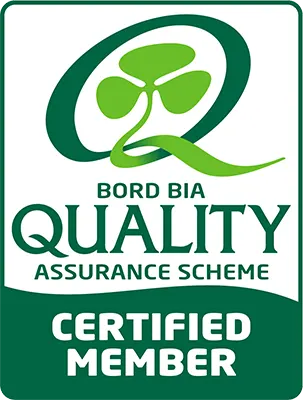As the calving season approaches for Irish dairy producers, a period of intense effort and vigilance begins. Calving can happen around the clock, leaving little room for error if complications arise. Careful planning is essential—not only to ensure healthy calves but also to support farmers’ well-being during this demanding time. Proper preparation and effective management strategies can make a significant difference, reducing stress while maximising herd health and productivity.
1. Prioritise Pre-Calving Nutrition
Ensuring cows have adequate nutrition during the final trimester, particularly the last 50-60 days, is crucial. Proper body condition impacts calf health, stamina during delivery, colostrum quality, and subsequent rebreeding. Maiden heifers are especially vulnerable as they continue growing while carrying calves. As space for feed intake decreases, focus on providing energy-dense, protein-rich feed to prevent rapid body condition loss, especially during cold weather when forage quality often declines.
2. Review Your Herd Health Plan
Consult your vet to review your herd health protocols. Identify key risk factors and implement management practices to mitigate common issues. Address historical challenges, such as calf health concerns, to proactively improve outcomes this season.
3. Inspect Calving Facilities
Check that all gates, pens, and head catches are in good working order. Clean and disinfect calving areas thoroughly and ensure adequate lighting is available. Good facilities reduce stress and improve safety for both farmers and livestock during calving.
4. Prepare Essential Calving Supplies
Ensure you have all necessary equipment, including:
- Plastic sleeves and lube
- Calving Jack
- Calf feeding bottles and Stomach Tubes
- Halters, ropes, and functional calf pullers
Regularly test flashlights and other equipment to avoid unexpected issues during nighttime calving.
5. Ensure Access to Quality Colostrum
Colostrum within the first 2 hours is critical for calf immunity. Difficult births can delay nursing, so have colostrum or colostrum replacement products on hand. Ideally, use colostrum from your herd to prevent disease introduction. Consult your vet on the best replacement products for your operation.
6. Prepare for Cold Weather Challenges
Hypothermia can quickly affect newborn calves in cold, wet conditions. Plan for warming facilities or equipment, such as heated calf jackets or infrared lamps.
7. Provide a Clean, Dry Environment
Wet and muddy conditions increase stress and disease risks. Offer wind protection and ensure calving areas are dry and well-bedded. Reducing environmental stress promotes calf health and improves overall herd performance.
8. Maximise Intake and Monitor Performance
To achieve optimal winter performance, forage quality must be determined and a plan made to supplement cows accordingly. Minimising digestive upsets is also vital to ensure the desired results. Regularly monitor Body Condition, especially during the housing period and adjust management practices accordingly.
Partner with Experts for Better Results
Specialist Nutrition understands the unique challenges of farming in Ireland. Our tailored nutritional solutions and expert guidance help you maintain healthy, productive herds throughout the season. Reach out to our team today for customised support in managing your herd’s nutrition and maximising performance during calving season.





